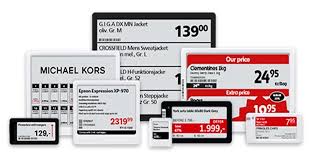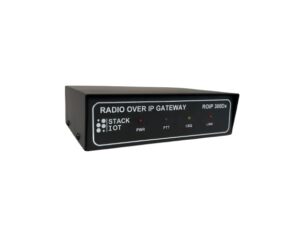Now that stores are using more automated systems, Electronic Shelf Labels (ESLs) are changing how information about products and their prices is handled. Many supermarkets are changing to electronic price tags instead of paper labels, which in turn increases the efficiency and consistency of goods sold and enhances customers’ shopping experience.
Still, adopting ESLs is a major decision that should be considered carefully. It’s important to check certain aspects beforehand to guarantee a smoother adaptation and returns in the future.
What Are Electronic Shelf Labels Used for?
They are small electronic screens that replace the old paper labels in shops. They communicate with the central computer wirelessly, giving every price in the store up-to-date information.
Most often, such terms are found in:
- Stores where you can find food
- Supermarkets
- Selling electronics is one of these industries.
- Pharmacies
- Easy places to shop
The use of electronic labels in grocery stores helps because items need to be priced and updated often.
The Major Advantages of Using Electronic Shelf Labels
Before getting into specific details, here’s brief outline of what attracts people to ESLs.
- Real-Time Price Updates
- Get rid of human error
- Ensure the price on the shelf matches the one on the receipt.
- Cuts the costs of employees
- Save time by not having staff to change the paper labels manually every day.
- Enhancement in Customer Experience
- Well-presented and correct displays and dynamic promotions increase the trust of shoppers.
- Sustainability
- Lessens the use of paper and backs environmentally friendly actions.
You should consider certain factors ahead of applying the new strategy.
Nevertheless, there are still a few questions to ask before embracing electronic tags in supermarkets and other retail outlets.
1.The price you need to pay and how much you will gain.
Using Electronic Shelf Labels can cost a lot of money at the start. It’s necessary to take into account:
- More money is needed for each label if the screen is color or bigger
- Equipment such as Wi-Fi networks and gateways
- Software licenses are one topic covered.
- Patrol and regular inspection
It is important to figure out your breakeven point. Plenty of stores can obtain ROI in as little as 12–24 months by cutting labor and getting pricing right.
2. Specifications of the space such as its dimensions and the arrangements of fixtures
How many ESLs you require will be decided by a few factors.
- Number of different products
- The number of products that are made and sold in a set period.
- Space for the shelves and their sections
Sometimes, the first step is to put electronic shelf labels in busy or highlighted areas before placing them in other spots.
3. Users can connect the system with POS and ERP Systems.
To use ESLs well, they should be attached to the POS or ERP of your store. As a result, companies receive real-time information.
- Price information is changed regularly
- The level of inventory in the company varies.
- Campaigns aimed at promoting the business
Questions for your vendor:
- Is it possible for ESLs to communicate with the software you currently use?
- Is the use of API for integration available?
- Can you update your servers without much difficulty?
4. Difference in Label Types and how I can choose Display Options
We can find different types of ESLs.
- E-Ink Monochrome gives you just black and white.
- With E-Ink Color, you can transform the screen to red, yellow, or full color, but it is more expensive.
- LCD Labels: Examples of this include video or bright images (they use up more electricity)
- Select a printer according to what type of product you are printing and what branding you require. For example:
- The use of bright alerts might draw attention to the fresh or clearance sections.
- If the models for standard shelves are in black and white, the costs can be reduced compared to shelves with color models.
5. Wireless network setups
- Strong signals are present in every part of the store.
- In some cases, people encounter issues relating to other electronic devices within the store.
- How many gateways are there and where they should be placed
- Conducting a wireless site survey before putting the solution in place is recommended.
6. Improving how the staff is trained and handling changes
Changing from using paper to digital technology is really major for floor staff. Ensure:
- Employees are taught how to use the ESL software.
- The company has established clear steps for promotions, discounts, and mistakes
- Workers know the advantages of reducing opposition.
7. The battery life is also something to consider and you should take care of your batteries.
Most of these devices use coin-powered batteries, and their lifespan is between 3-10 years based on their usage. Ask prices from several vendors and find out if there are any discounts available.
Steps to replace the battery
- You can rely on the battery for a long time.
- Features that notifies you when your battery level is low
8. How well the vendor can be trusted and what kind of support they offer
When you buy this equipment, you are also choosing a long-term companion. Evaluate:
- The period it takes to get technical support
- These programs may use references and case studies.
- Get suppliers that have experience placing electronic shelf labels in grocery stores or supermarkets that share features with yours.
9. Scalability
Will the level of ESL keep up as your company expands?
Be sure that your solution does the following:
- It includes adding new merchandise, product groups, or shops.
- Gives the ability to control different bars from the cloud
- Lets users set rules from the main system and make special changes locally
Use Case Table: Where ESLs Add Most Value
| Store Section | Value Added by ESLs |
| Fresh Produce | Dynamic pricing for perishables |
| Beverage Aisle | Easy promotion updates and seasonal discounts |
| Electronics | Frequent price changes and product details |
| Pharmacy | Compliance and accurate labeling |
| Dairy/Meat Sections | Time-sensitive markdowns for expiring products |
️ Read more :- See why industry leaders trust our Pick to Light System. Click here for complete details!
Conclusion
Now, having electronic shelf labels is a must for businesses, especially when business is busy and fast-paced. Being able to hire fewer workers, charge correct prices, and be flexible in the moment, ESLs can greatly improve how your store runs.
Even so, good preparation, ensuring systems work together, and picking suitable vendors are important for their achievements. If you want to learn more about ESL solutions for retail, contact StackIOT, the technology partner that supports modern retailers in using intelligence to eliminate the need for pen and paper.
FAQs
1. What are the definitions of Electronic Shelf Labels?
Electronic Shelf Labels are modern screens that show prices and other product information, and these are updated using software from the main system.
2. In what way do electronic shelf labels in grocery stores make things better?
They prevent store employees from having to adjust prices manually, decrease mistakes, and enable stores to act fast when needed.
3. Are electronic price tags used in supermarkets very costly?
Because these are costly to start with, they gradually save you money through lower workforce, better training, and loyal customers.
4. Is it possible to have ESLs used at numerous store branches?
Most ESL systems today use cloud solutions and make it possible to oversee many branches from one place.
5. Does an ESL need internet access to operate?
Although RF protocols are widely used by ESL systems, all kinds of networks, including Wi-Fi and Ethernet, are required for gateway functions.




